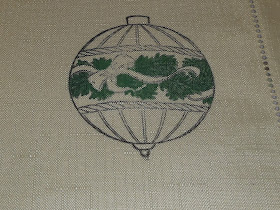Today we have a fun guest post from the fabulous cookbook author, Jillayne Clements. I reviewed her marvelous new gluten-free cookbook here. ENJOY!
Hi! I’m so excited to be a guest blogger on Rachelle’s
website. My name is Jillayne Clements and a little over two years ago, my
doctor told me that because of antibodies to gluten, I would never be able to eat
gluten containing foods again. I felt heartbroken and discouraged! But because
I’m a big believer in whole foods and had been eating a whole foods diet for
years, I knew right off that I wouldn’t be eating the typical refined gluten-free
foods made of white rice flour, tapioca and potato starches, and xanthan gum.
Instinctively I felt there had to be a way to prepare gluten-free whole foods
and get them to trap air bubbles and bind together like gluten containing foods.
So taking in part what I already knew about the need for
properly preparing grains before eating them—a form of pre-digestion that has
existed for centuries but relatively forgotten in our day; souring and
germinating—and applying it to the gluten-free world, I was determined to
accomplish my goal of creating whole food gluten-free baked goods. After many tries, I almost gave up on my goal,
but I practiced around with different flour blend combinations and eventually
came up with some whole food recipes that look and taste like their wheat
counterparts. Plus, I discovered how to make a whole food alternative to gums
that can be made at home; something I call glue flour. In a nut shell, I
persisted and found a way to make gluten-free whole foods and grains bind
together and trap air bubbles much like gluten, without using any refined
starches or gums. And I’m SO excited to share what I have learned with others
who, like me, are frustrated with the lack of fiber, nutrients, flavor, and
heartiness of typical gluten-free foods and are looking for whole food
gluten-free alternatives.
Blueberry Muffins (Makes 12)
Ingredients:
2 cups white beans
(sprouted and cooked)
4 eggs
¾ cup dehydrated cane sugar
1 tsp. sea salt
1 tsp. baking soda
1 tsp. vanilla
½ cup butter (melted)
2 cups oat flour
1
½ cups frozen blueberries
In a food processor or blender, blend beans
and eggs until
smooth. Add dehydrated cane
sugar, salt,
soda, vanilla, and melted butter.
Pour in oat
flour and mix well. Stir in frozen
blueberries
until mixed together. Scoop into 24
oiled muffin tins and bake for 25 minutes at 400ºF.















